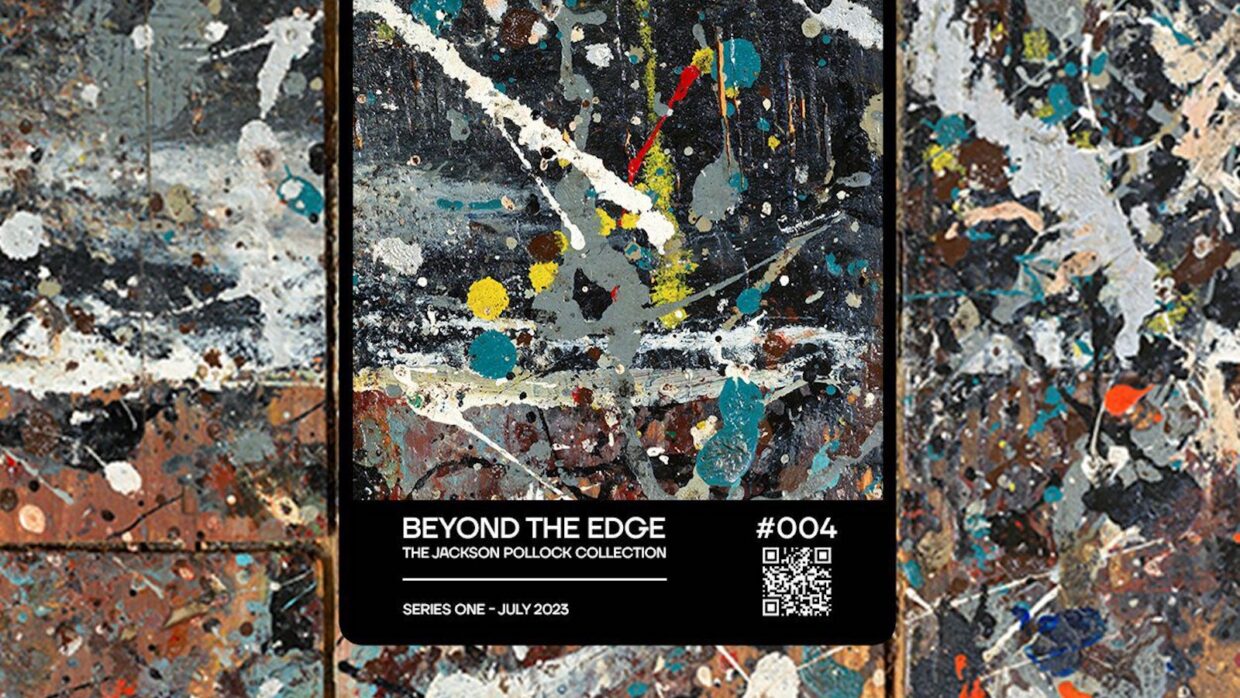The world of nonfungible tokens, or NFTs, has been a rollercoaster ride. In 2022, A-list celebrities like Snoop Dogg were jumping on the NFT bandwagon, and many thought the sky was the limit. Fast forward to today, and with all the gloomy headlines about celebrity ‘investments’ into NFTs and how much money they’ve lost, you’d be forgiven for wondering if NFTs are dead forever.
However, despite the waning interest from the mainstream, the art world continues to explore the potential of NFTs. A project called “Iconic Moments” has brought Jackson Pollock’s art to the forefront once again. High-resolution photographs were taken of the paint splatters on the floor of Pollock’s studio, which had accumulated over the years. By utilizing artificial intelligence, these individual pieces were digitally stitched together, creating a series of four unique artworks.
Similarly, VenturePunk, a Web3 innovation studio, has launched Prohibition, a generative art platform and marketplace based on Arbitrum. The platform allows any artist to create, mint, and sell a generative art collection, democratizing the creation of generative art.
Telefónica, a major telecommunications provider, has also enhanced its NFT marketplace by adding exclusive collections of artist Van Gogh by Olyverse, a collection with social commitment by Alexis Diaz Pimienta, and ‘Outer Ring’, a video game offering exclusive benefits to users through the purchase of NFTs.
In Madrid, Spain, Thyssen-Bornemisza National Museum in partnership with Olyverse, has minted its own NFTs featuring an exclusive collection of Van Gogh’s artworks. Each NFT represents an original artwork and is part of a limited series, with only 100 available for purchase on Telefónica’s NFT marketplace.
While the NFT market may have lost some of its initial momentum, it’s clear that arts institutions are continuing to explore and innovate in this space. The use of NFTs in the art world is not only about creating digital art but also about preserving and revitalizing physical spaces and legacies. The proceeds from the minting and sales of these artworks often go towards revitalizing, restoring, and preserving the studios themselves.
However, it’s crucial to note that acquiring these pieces does not directly benefit the artists themselves, as many have long since passed away. Instead, the funds raised contribute to the preservation of their legacy and the studio that played a vital role in their artistic process.
Critics argue that projects like these can sometimes exploit the legacies of deceased artists, potentially in ways they would disapprove of. The notion that paint splatters on the studio floor should translate into numbered editions of Pollock’s art is questioned by some.
The NFT landscape is not just about the Western world. Asian markets like China, Japan, and South Korea are still seeing a lot of action. China ranks first globally in terms of search interest for NFTs, with Hong Kong in fourth place and South Korea in sixth. Additionally, China is ranked fourth for NFT adoption. Asian consumers have a strong appetite for luxury goods, which account for over half of global sales. Many luxury brands such as Gucci, Burberry, and Louis Vuitton have launched NFTs that appeal to their sense of exclusivity and status.
Asian consumers are also interested in investing, which drives a lot of NFT buying. China, Japan, and Korea are among the top countries in terms of crypto trading volume and number of retail investors. Furthermore, Asian consumers value digital identity and culture, which NFTs can express and enhance. They are more willing to pay for digital goods that enhance their online experiences, such as skins, emojis, and other accessories.
As we pass the mid-point of 2023, NFTs are increasingly becoming about concrete use cases and less about simple images. They are evolving into access tokens that grant users exclusive rights or privileges, loyalty tokens that reward users for their engagement or contribution, and identity tokens that allow users to express their personality, style, or affiliation. Despite the ups and downs, the NFT market is far from dead; it’s merely shifting gears and finding its footing in a rapidly changing digital landscape.
According to Vincent Wong, managing director of Labs3.io,”In 2023, we’re already seeing a shift from a lot of short-term, opportunistic, smaller, stand-alone campaigns to fewer, but much larger, long-term projects that are much more fundamental to the core business strategy.”



